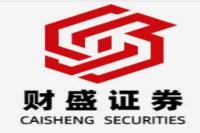Unlocking Green Growth: How New Production Forces are Revolutionizing China's Green Economy
Meta Description: Explore the synergy between new production forces and China's burgeoning green economy. Discover expert insights, innovative strategies, and future trends shaping sustainable development. Keywords: Green Economy, New Production Forces, Sustainable Development, China, Green Technology, Digital Economy, Renewable Energy, Circular Economy
Wow, China's green economy is exploding! It's not just a buzzword anymore; it's the engine driving a new era of economic growth and sustainable development. This isn't your grandpappy's economy – we're talking about a dynamic fusion of cutting-edge technology, innovative business models, and a deep commitment to environmental stewardship. Forget dusty old factories belching smoke; this is about smart factories humming with efficiency, renewable energy powering our cities, and circular economies minimizing waste. This article dives deep into the exciting intersection of new production forces and the green economy, offering expert commentary and actionable insights gleaned from a recent Beijing Business Report-sponsored symposium. Forget dry statistics – we’ll unpack the human element, the challenges, and the incredible opportunities this transformation presents. Prepare to be captivated by the stories of entrepreneurs pushing boundaries, experts charting the future, and policymakers shaping a greener tomorrow. Get ready to understand not just the what, but also the why and the how of this pivotal shift. We'll explore the strategies, the obstacles, and the potential for a truly sustainable and prosperous future for China. This isn't just about environmental protection; it's about economic empowerment, technological innovation, and a future where prosperity and planetary health go hand in hand. Are you ready to join the green revolution? Let's get started!
New Production Forces: The Driving Force Behind China's Green Transformation
The term "new production forces" might sound a bit academic, but it's essentially about using cutting-edge technology and innovative approaches to boost productivity and efficiency. Think AI-powered manufacturing, precision agriculture using drones and sensors, and blockchain technology ensuring transparency in supply chains. This isn't just about incremental improvements; it's a complete paradigm shift, a fundamental reimagining of how we produce and consume goods and services. And it's perfectly aligned with the goals of the green economy – creating a more sustainable and environmentally friendly way to fuel economic growth.
The recent symposium, co-hosted by the Beijing Business Report and Deep Blue Media Think Tank, highlighted the crucial role of new production forces in China's ambitious green goals. Experts from various sectors, including academics, business leaders, and policymakers, shared their perspectives, providing a comprehensive snapshot of the current landscape and future prospects. One key takeaway? This isn't just for "high-tech" industries; every sector – from manufacturing to agriculture to finance – can, and should, embrace these innovative approaches to drive green growth.
For instance, Ma Longlong, president of the China Society of Commercial Economics, emphasized the transformative impact of the green economy on the global competitive landscape. He highlighted the government's commitment to this transition, showcasing the alignment between policy goals and the potential of new production forces.
Green Economy Initiatives: A Multi-pronged Approach
China’s approach to greening its economy is multifaceted, encompassing various initiatives across diverse sectors. Here's a glimpse into some key strategies:
1. Green Low-Carbon Industries: Massive investment is pouring into sectors like renewable energy (solar, wind, hydro), energy-efficient technologies, and green transportation. The goal? To minimize carbon emissions while simultaneously boosting economic growth in these burgeoning industries.
2. Fiscal Policies and Incentives: Tax breaks, subsidies, and other financial incentives are being used to encourage businesses to adopt green technologies and practices. This carrot-and-stick approach is proving effective in accelerating the adoption of sustainable solutions.
3. Waste Management and Circular Economy: China is heavily investing in building a more circular economy, focusing on waste reduction, recycling, and resource recovery. This initiative minimizes environmental impact while creating new economic opportunities in waste management and recycling technologies.
4. Smart Agriculture & Precision Farming: Technology is revolutionizing agriculture, with sensors, drones, and data analytics optimizing resource use, reducing waste, and boosting yields. This not only improves food security but also minimizes the environmental footprint of agriculture.
5. Enhanced Energy Systems: A significant focus is placed on building a more resilient and sustainable energy system relying increasingly on renewable sources and smart grids. This encompasses grid modernization, smart metering, and energy storage solutions.
6. Robust Carbon Accounting and Regulatory Frameworks: Comprehensive systems for tracking carbon emissions, certifying products' carbon footprint, and implementing carbon trading schemes are crucial in achieving carbon neutrality.
| Initiative | Description | Impact |
|--------------------------|---------------------------------------------------------------------------------------------------------------|-----------------------------------------------------------------------------|
| Green Low-Carbon Industries | Investment in renewable energy, energy efficiency, and green transportation | Reduction of carbon emissions, job creation in green sectors |
| Fiscal Policies | Tax breaks, subsidies to incentivize green technologies | Faster adoption of sustainable practices, reduced costs for businesses |
| Waste Management | Investing in recycling, waste reduction, and resource recovery | Minimizes environmental impact, creates opportunities in waste management |
| Smart Agriculture | Utilizing technology to optimize resource use and boost yields | Improved food security, reduced environmental footprint of agriculture |
| Enhanced Energy Systems | Building a more sustainable energy system based on renewables and smart grids | Increased energy security, reduced reliance on fossil fuels |
| Carbon Accounting | Implementing systems for tracking emissions, certifying products, and carbon trading | Transparency and accountability in emissions reduction, efficient carbon pricing |
Digital Economy: A Green Enabler
The digital economy and the green economy are inextricably linked. As noted by Shi Kan, chairman of Kaiyu Group, digital technologies offer unprecedented opportunities to optimize resource use, improve efficiency, and drive sustainable practices. Think smart grids powered by AI, precision agriculture guided by satellite imagery, and blockchain technology ensuring the traceability and authenticity of green products. The digital revolution is not just accelerating the transition to a green economy; it's fundamentally reshaping the way we operate within it.
Furthermore, the integration of digital tools in various sectors, as highlighted by multiple speakers, showcases the transformative power of technology in driving efficiency and sustainability across the board. From smart meters enhancing energy management in buildings to AI-powered precision agriculture optimizing resource utilization, the synergy between digital and green initiatives is undeniable.
Case Studies: Green Innovation in Action
Several companies at the symposium showcased practical applications of new production forces in the green economy. Beijing Dezhong Hengyue New Energy Co., Ltd. is using data analytics to provide tailored energy solutions to its clients. They emphasize data-driven decision making, enabling businesses to reduce energy consumption and transition to greener alternatives. Meanwhile, Ao Li Beijing New Energy Company is leveraging blockchain technology to track and trade green electricity, ensuring transparency and accountability in the energy sector. This innovative approach addresses challenges in renewable energy integration and promotes localized energy consumption.
Addressing Challenges and Concerns
Despite the immense opportunities, the transition to a green economy isn't without its hurdles. For example, the intermittent nature of renewable energy sources like solar and wind poses significant challenges for grid stability. The high initial investment costs of green technologies can also be a barrier for smaller businesses. Finally, effective policy implementation and public awareness campaigns are crucial to ensure widespread adoption of sustainable practices. Addressing these challenges requires a collaborative effort from governments, businesses, and individuals.
The discussion also touched upon the ongoing debate about the role of traditional energy sources. Chen Jiulin, chairman of Joseph Capital, pointed out that traditional energy sources like natural gas and petroleum will likely remain important components of the energy mix for the foreseeable future, even as renewable energy sources grow. A balanced approach that recognizes the value of both traditional and renewable energy sources is essential for a smooth and sustainable transition.
Moreover, the integration of new production forces into existing industries necessitates careful consideration of workforce adaptation. Retraining and upskilling programs are crucial in ensuring a seamless transition for workers whose roles may be affected by automation or technological advancements in the green economy.
Frequently Asked Questions (FAQs)
Q1: What are new production forces in the context of the green economy?
A1: New production forces refer to the application of advanced technologies and innovative approaches to improve productivity and efficiency, specifically within the context of environmental sustainability. This involves using technologies like AI, IoT, and blockchain to optimize resource use, reduce waste, and minimize environmental impact.
Q2: How can traditional industries participate in the green economy transition?
A2: Traditional industries can adapt by adopting green technologies, improving energy efficiency, implementing circular economy principles, and investing in sustainable supply chains. Government incentives and support can facilitate this transition.
Q3: What are the main barriers to widespread green economy adoption?
A3: Challenges include the high initial investment costs of green technologies, the need for workforce retraining, and the need for robust policy frameworks to support the transition.
Q4: What role does the digital economy play in the green economy?
A4: The digital economy is a crucial enabler of the green economy. Digital technologies like AI, IoT, and blockchain offer solutions for optimizing resource use, improving efficiency, and promoting transparency and accountability in sustainable practices.
Q5: How can consumers contribute to a greener economy?
A5: Consumers can support the green economy by choosing environmentally friendly products and services, reducing their carbon footprint, and advocating for sustainable policies.
Q6: What is China's long-term vision for its green economy?
A6: China's long-term vision is to achieve carbon neutrality, creating a sustainable and prosperous economy while minimizing its environmental impact. This involves a massive transition to renewable energy, significant investments in green technologies, and the implementation of robust policy frameworks to support this transformation.
Conclusion: A Brighter, Greener Future
China's commitment to a green economy powered by new production forces is not just an environmental imperative; it's a strategic choice for long-term economic prosperity. While challenges remain, the opportunities are immense. The symposium showcased a vibrant ecosystem of innovation, with businesses, researchers, and policymakers collaborating to shape a more sustainable future. By embracing technological advancements, implementing effective policies, and fostering a culture of sustainability, China is well-positioned to lead the global transition to a greener, more prosperous world. The journey is ongoing, but the potential for a brighter future is undeniable.



